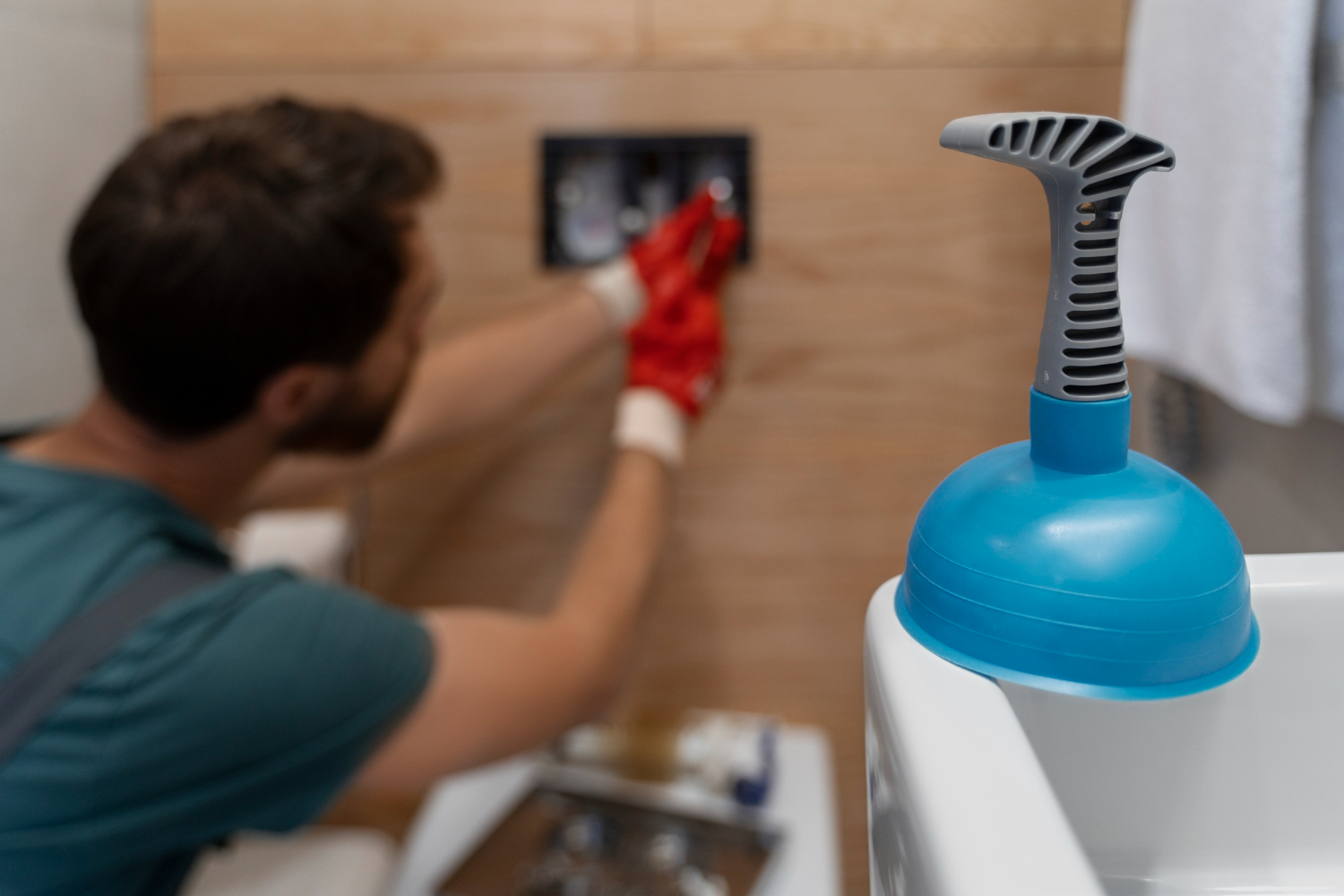Call Us This Monday to Get $50 OFF
Call Us Now to Get$50 OFF Monday.
Ratings based on 2491 reviews
Great Plumbers, Great Reviews
Call Us This Monday to Get $50 OFF
Call Us Now to Get$50 OFF Monday.
Ratings based on 2491 reviews
Great Plumbers, Great Reviews

If you’ve ever had the misfortune of dealing with a clogged drain, you know how unpleasant the situation can be. Slow-draining fixtures, foul odors, and water damage can turn your life upside down. The good news is—there’s a simple and inexpensive way to clear clogged drains: a plunger.
But the common question plumbers get asked is ‘how do you use a plunger correctly?’ In this guide, the experts at Mr. Rooter Plumbing explain how to use a plunger to clear clogged drains. Remember, not all clogs can be cleared using DIY techniques. If you need professional help, consult with a professional plumbing repair service in Arthurtown, SC.
If you've ever scrubbed endlessly at chalky residue on your glassware, spotted white streaks on your faucets, or…
When you think about your building’s infrastructure, the main water line installation might not be the first thing…
Water heaters work around the clock to supply our homes and businesses with the hot water we use…
You may or may not notice it, but the water from our taps can contain an assortment of…
Make sure you're using the right type of plunger for the job. A cup plunger is ideal for flat surfaces like sinks, tubs, and shower drains. For toilets, you'll want a flange plunger, which has an extended rubber flap that fits properly into the toilet bowl's drain hole.
A plunger uses suction and pressure to dislodge the clog, which means forming a strong seal is crucial. Position the plunger directly over the drain and press down gently to expel the air inside. Once you’ve created a tight seal, make sure the cup is completely covering the drain opening. In sinks or tubs, it may help to block the overflow vent with a damp cloth to increase pressure.
With your seal in place, begin plunging with a steady up-and-down motion. Push down firmly and pull up sharply, but keep the plunger’s cup attached to the surface the entire time. You should aim for about 15 to 20 strong thrusts. The goal is to build enough pressure and suction to loosen whatever is clogging the drain. For toilets, make sure there’s enough water in the bowl to cover the rubber part of the plunger—this helps with pressure and prevents splashing.
After a few rounds of plunging, lift the plunger away quickly and see if the water begins to drain. If you notice a swirling motion or hear a gurgling sound, that’s a good sign the clog is clearing. For toilets, a successful plunge will allow the water level to drop and flush normally. If nothing happens, try plunging again.
Once the clog is cleared, don’t forget to disinfect the plunger and surrounding area. Soak the plunger in a disinfectant solution or bleach water, especially if it was used in the toilet. Store it in a dry area, and consider keeping different plungers for sinks and toilets to avoid cross-contamination.
If your plunging efforts don’t resolve the issue after several tries, or if clogs keep returning, it may be time to call a licensed plumbing repair service. Persistent or severe blockages could be a sign of a bigger problem in your drain lines that requires professional attention. Get in touch with professional plumbers specializing in cleaning drains.
If you’ve tried using a plunger or drain snake to clear a clogged drain with no success, it might be time to call Mr. Rooter Plumbing for clogged drain cleaning. Stubborn clogs caused by tree roots, mineral deposits, foreign objects, or hardened debris may require professional expertise and specialized tools. The trusted plumbers at Mr. Rooter Plumbing have been offering professional drain cleaning services for over 50 years. We have the knowledge, skills, and advanced tools to clear clogs in kitchen drains, shower drains, toilets, bathtubs, floor drains, and more. Contact us for a free quote and to schedule an appointment.
Few things are more frustrating to homeowners than dealing with water leaks, especially the…
Read moreClogged drain lines and sewer lines are a common plumbing problem that can be…
read moreThere are many incredible benefits that come with upgrading your kitchen. Apart from improved…
read moreAs a homeowner, you cannot afford to ignore your bathroom plumbing. Clogged drains, faulty…
read more